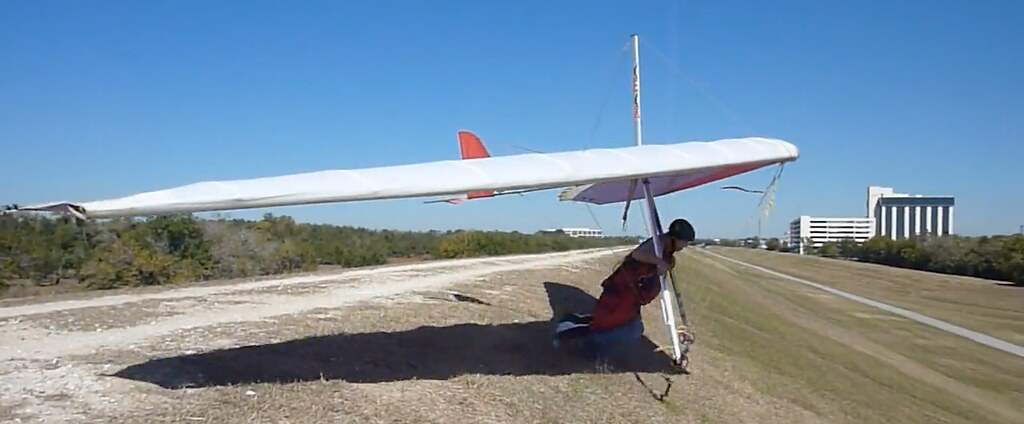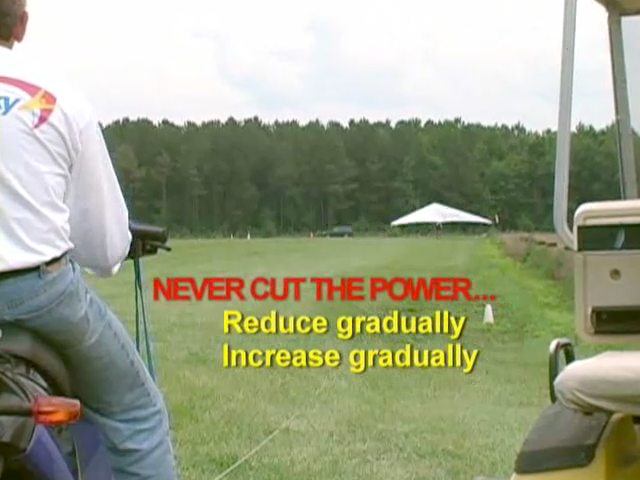http://www.hanggliding.org/viewtopic.php?t=26870
weak links
Zack C - 2012/08/14 17:30:55 UTC
Paul Hurless - 2012/08/14 16:21:23 UTC
Our wings have recommended operating weights...
They're not recommendations. From Wills's site:
The range of hook in weights given is the range for which the glider complies with the performance, stability, control and structural requirements of the HGMA Airworthiness Standards...
...but they are not certificated.
Not by the FAA, at least.
As usual the feds did a poor job at trying to incorporate our wings into the mix of the regulations governing certificated aircraft.
That may be true, but it's clear they intended the same regulations to apply to both sailplanes and hang gliders. Legality aside, it should also be clear why weak link breaks are common for hang gliders but virtually unheard of for sailplanes.
Paul Hurless - 2012/08/14 17:39:22 UTC
It is pretty clear from what I seen when I've aerotowed. Reusing weak links and pilot errors were the two most common causes.
- Yeah Paul, if you don't replace a loop of 130 pound Greenspot every flight it won't be JUST PERFECT for YOUR flying weight. It might instead be just perfect for somebody ten or fifteen pounds lighter than you (who is also using a fresh loop of 130 pound Greenspot just perfect for him).
- Did ya ever notice that the two hundred pound gliders were replacing their weak links a lot less frequently and making a lot fewer errors than the three hundred plus pound gliders?
- The fuckin' weak link isn't supposed to break in response to pilot errors. I make about ten of them before I get to release altitude every time I fly. The fuckin' weak link is supposed to keep the pilot from getting killed if he - or his goddam tug driver - makes a pilot error and ONLY fail just before the glider crumples.
The good thing is that a weak link break is no big deal other than missing out on that tow.
- Yeah.
http://ozreport.com/forum/viewtopic.php?t=865
Tandem pilot and passenger death
Mike Van Kuiken - 2005/10/13 19:47:26 UTC
The weak link broke from the tow plane side. The towline was found underneath the wreck, and attached to the glider by the weaklink. The glider basically fell on the towline.
That's the absolute WORST that can happen.
- And of course missing out on a tow...
http://ozreport.com/13.238
Adam Parer on his tuck and tumble
Adam Parer - 2009/11/25
Due to the rough conditions weak links were breaking just about every other tow and the two tugs worked hard to eventually get everyone off the ground successfully.
...and forcing everyone else in line behind you to miss out on tows while you relaunch is no big fucking deal either.
- And the cost of a Dragonfly turnaround is totally negligible.
- And we don't need to worry about the danger for either aircraft presented by an additional launch to get the job done because w have a loop of 130 pound Greenspot which will break before anyone can get into too much trouble - as we just demonstrated five minutes ago.
...weak link failing to break is a whole other problem.
Why?
http://www.hanggliding.org/viewtopic.php?t=11998
Tad Report
Paul Hurless - 2009/05/15 01:43:43 UTC
Yes, I can do better. It took me all of 2 minutes to come up with a simple (darn, the KISS principal keeps popping up) system that only has two moving parts; the cord to actuate it and the actual release that holds onto the tow line. It's almost completely internal in the control bar and a downtube, only emerging at the control bar for the hand to actuate it and at the top of the downtube where it goes to the release mechanism. No pulleys, springs, or bungees needed. If you are doubting me I could send you a sketch.
I thought this brilliant release design of yours would allow you to blow tow with little more than the mere thought of it. What happened? Get so drunk that you lost your cocktail napkin and were unable to recall the arrangement?
Personally, I prefer to fly off mountains and not have to deal with towing.
That's a good idea, Paul. And I'd prefer that you shut the fuck up on issues on which you don't have a goddam clue what you're talking about.
It's so much simpler to just run off a launch.
- But so much more dangerous 'cause you don't have a standard aerotow weak link to gently deposit you back on the surface if you don't fly smoothly enough through any turbulence you may encounter as you're getting away.
- Yeah. Simple procedures and equipment for simple minds. No towline tension to destabilize your glider and crank up your pitch attitude and a runway which keeps dropping away in front of you.
Mike Lake - 2012/08/14 18:11:23 UTC
No big deal as long as you don't hit the ground, something I have witnessed on a few occasions.
Paul Hurless - 2012/08/14 18:13:13 UTC
That's true of any kind of launch. Failing to be ready to immediately land if a weak link breaks is a very basic pilot error.
Listen douchebag...
Failing to be ready to immediately land if a Cessna loses an engine is a very basic pilot error. But, nevertheless, way better people than you'll ever hope to be have gotten killed when their Cessnas have lost engines - especially when Ma Nature hits them with curve balls at just the most inconvenient possible moments.
So REAL pilots do everything they possibly can prior to moving out onto the runway to make damn sure that they won't lose their engines or the towlines connecting them to their engines.
But don't let me be the one to stop you from your better-aviation-through-random-fishing-line-failures approach to hang gliding.
Shithead.

